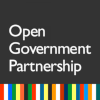Access to Justice: Clear and accessible information for the effective exercise of rights (ARBA0010)
Overview
At-a-Glance
Action Plan: Action plan – Buenos Aires, Argentina, 2025 – 2027
Inception Report: Not available
Commitment Start: Jun 2025
Commitment End: Jun 2027
Institutions involved:
- General Direction for Access to Justice
- General Direction for Access to Information and Open Government
- General Direction for Access to Information and Open Government
- General Direction for Access to Information and Open Government
- Asociación Civil por la Igualdad y la Justicia
- Fundación Poder Ciudadano
- Fundación Poder Ciudadano
- Secretariat of Innovation and Digital Transformation
- Council of the Judiciary of the Autonomous City of Buenos Aires (CABA)
Primary Policy Area:
Primary Sector:
OGP Value:
- Access to information
Description
Commitment ID
ARBA0010
Commitment Title
Access to Justice: Clear and accessible information for the effective exercise of rights
Problem
The City of Buenos Aires has a broad regulatory and institutional framework to ensure access to rights and the resolution of conflicts.
However, the involvement of multiple agencies and programs can lead to fragmentation, overlapping functions, and difficulties in coordination and service integration.
In addition, there is a pressing need to improve the systematization, visibility, clarity, and accessibility of information about services and programs—both for users and service providers.
This situation negatively affects access to justice, as it causes confusion among citizens, re-victimization of individuals in vulnerable situations, and challenges in ensuring swift and effective referrals by service operators.
The most affected groups are those facing the biggest structural barriers: people with low income or educational levels, children and adolescents, older adults, persons with disabilities, and migrants.
Status quo
In the Autonomous City of Buenos Aires, the range of social services and programs designed to ensure access to rights is distributed across multiple public agencies. Between the Executive Branch, the Judiciary, the Ombudsman’s Office, and others, there are over 50 institutions involved. According to the 2024 Social Services Guide published by the City Government, more than 400 social benefits are available, organized by target populations such as children, adolescents, older adults, and persons with disabilities, among others. However, there is currently no tool that systematizes and integrates information on these services, making it difficult for the general public to access.
Action
Develop a prototype of a digital tool that identifies, systematizes, and clearly and accessibly displays the public agencies that provide assistance, legal representation, mediation, or guidance in conflict situations in the City of Buenos Aires. At the same time, the tool will consolidate referral networks and inter-institutional coordination through shared protocols and formal communication channels. The development process of the tool will be participatory and co-constructed with key stakeholders in the access-to-rights ecosystem, with the goal of institutionalizing these networks. In parallel, dialogue spaces will be promoted to reach consensus on standards for publishing and opening public information regarding the implementation of social programs. This will strengthen the availability and use of such information by citizens, community leaders, and system operators.
How will the commitment contribute to solving the public problem described above?
In the first place, the development and validation of a functional prototype of a digital tool is expected. This tool will enable citizens, state operators, and community leaders to access clear information to easily identify the agencies that provide assistance, legal representation, mediation, or guidance in cases of conflict and in accessing social programs. The information will be clear, geo-referenced, and regularly updated.
In this way, the initiative will improve access to information about available resources for appropriately addressing the challenges faced by the population in accessing and exercising their rights, thereby reducing the existing access-to-justice gap.
This will help strengthen transparency, interoperability, and the system’s responsiveness.
Finally, the process will promote dialogue and the creation of collaborative networks among public agencies, civil society organizations, and citizens.
What long-term goal as identified in your Open Government Strategy does this commitment relate to?
This commitment aligns with the strategic vision by promoting citizen participation in the design and implementation of tools that improve access to public information. It fosters data-driven value creation by establishing clear and accessible publication standards that enable data reuse for decision-making and civic oversight.
Primary Policy Area
Inclusion, Right to Information
Primary Sector
Justice, Public Services (general)
What OGP value is this commitment relevant to?
| Access to information | This initiative reinforces the instrumental role of the right of access to information, recognizing it as a necessary precondition for the realization of other fundamental rights, particularly access to justice and the ability to benefit from social programs. |
